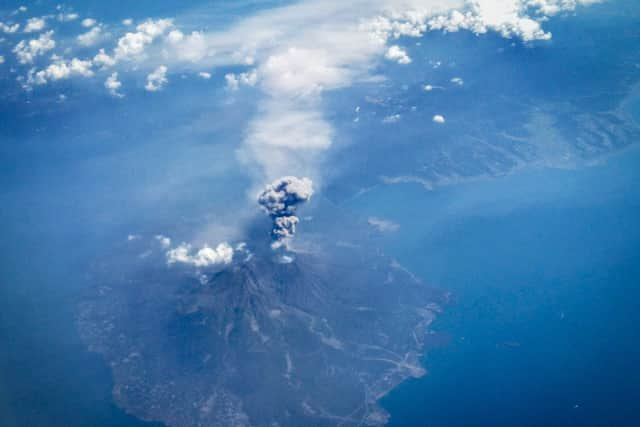Japan volcano eruption: ‘highest alert’ issued after Sakurajima erupts and it is declared an ‘emergency’
and live on Freeview channel 276
A level 5 alert has been issued after a volcano erupted in Japan.
The Sakurajima stratovolcano in Kagoshima Prefecture, Kyushu erupted earlier today (24 July).
Evacuations have been ordered in the area.
Here is all you need to know:
What has happened?
Advertisement
Hide AdAdvertisement
Hide AdThe Sakurajima stratovolcano erupted at around 8.05pm local time - 11.05GMT, Reuters reports.
It is located on the island of Kyushu, which is the third largest of Japan’s islands.
NHK public television reported that volanic stones were raining down at a distance of 2.5 km (1.5 miles) from the volcano.
The eruption alert level has been raised to 5 and some areas have been ordered to evacuate, Sky News reports.


What is a level 5 alert?
Advertisement
Hide AdAdvertisement
Hide AdIt is the highest level that can be issued by Japanese Meteorological Agency.
The levels mean the following:
- Level 1 (Potential for increased activity)
- Level 2 (Restriction on proximity to the crater) : Refrain from approaching the crater
- Level 3 (Restriction on proximity to the volcano) : Refrain from entering the danger zone. (Target areas determined in line with current volcanic activity.)
- Level 4 (Evacuation of the elderly, etc.) : Prepare to evacuate from alert areas. Have disabled people evacuate
- Level 5 (Evacuation) : Evacuate from the danger zone
The level 5 alert has been issued for Kagoshima Prefecture including Kagoshima City - the first time it has been issued for the volcano.
It has been upgraded from an earlier Level 3 alert.
Reuters reports that several residential areas of Kagoshima within about 3 km of the crater could be evacuated.
There has been no immediate reports of damage due to the eruption of Sakurajima.
Is there footage of the eruption?
Advertisement
Hide AdAdvertisement
Hide AdNHK, the public broadcaster in Japan, has shared footage of the eruption on social media.
Plumes of smoke can be seen billowing into the sky and it also appears as if a red mass can be seen flowing down one side of the volcano.
What has the government said?
“We will put the people’s lives first and do our utmost to assess the situation and respond to any emergency,” deputy chief Cabinet Secretary Yoshihiko Isozaki told reporters.
He called on residents in the area to pay close attention to the latest update from the local authorities to protect their lives.
Advertisement
Hide AdAdvertisement
Hide AdJapan’s Meteorological Agency said it has raised the eruption alert to the highest level of five and about 120 residents in two towns facing the volcano were advised to leave their homes.
The agency warned of falling volcanic rocks in areas within 1.8 miles of the crater and possible flow of lava, ash and searing gas within 1.2 miles.
Has the volcano ever erupted before?
Sakurajima is one of the most active volcanos in Japan.
It used to be an island but in 1914 it erupted and the lava flows connected it with the Ōsumi Peninsula, making it a peninsula.
The 1914 eruption was the most powerful in Japan in the 20th century.
Advertisement
Hide AdAdvertisement
Hide AdEruptions have been recorded at the volcano since the 8th century - with the biggest ones occuring in 1914 and 1471-76.
In recent history it has been almost constantly erupting since 1955.
The most recent one prior to today (24 July) was in 2020 and a volcanic ash advisory for aviation was issued.
A level 4 warning was previously issued in August 2015.
What type of volcano is Sakurajima?
It is a stratovolcano, also known as a composite volcano.
This means that it is a conical volcano built up by many layers of hardened lava.
Advertisement
Hide AdAdvertisement
Hide AdUnlike shield volcanoes, stratovolcanoes are characterised by having a steep profile with a summit crater and periodic intervals of explosive eruptions and effusive eruptions - the later being when lava steadily flows out of the volcano.
Comment Guidelines
National World encourages reader discussion on our stories. User feedback, insights and back-and-forth exchanges add a rich layer of context to reporting. Please review our Community Guidelines before commenting.